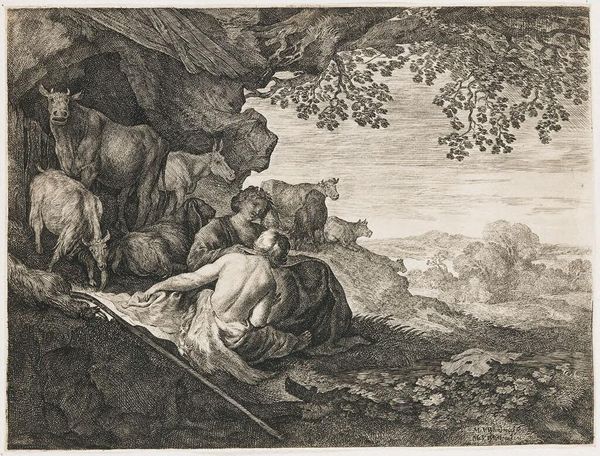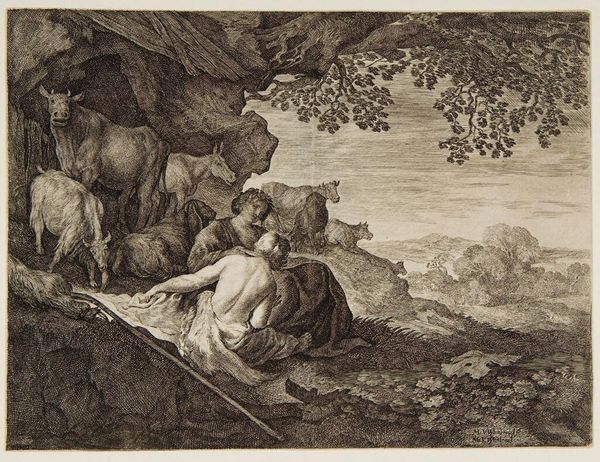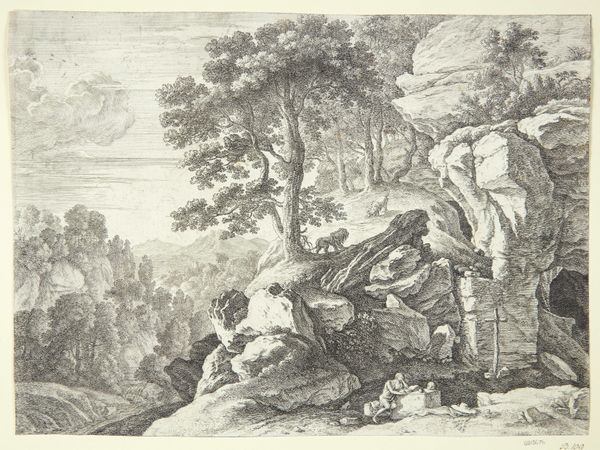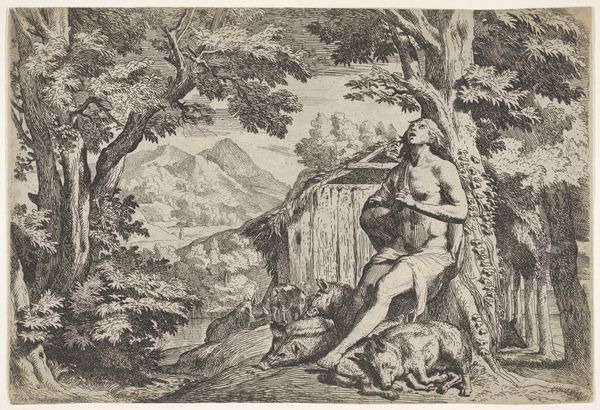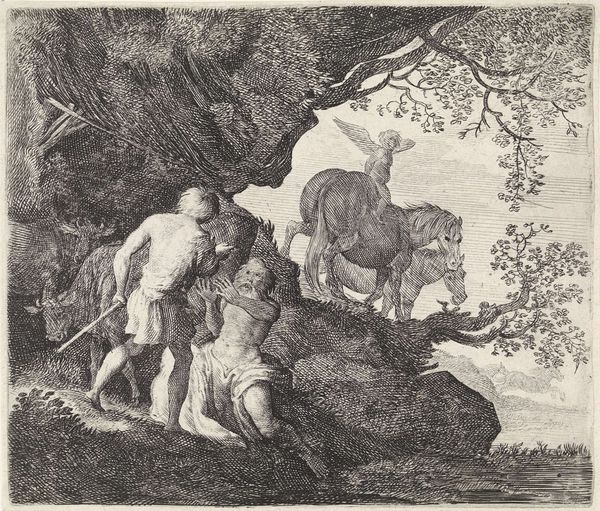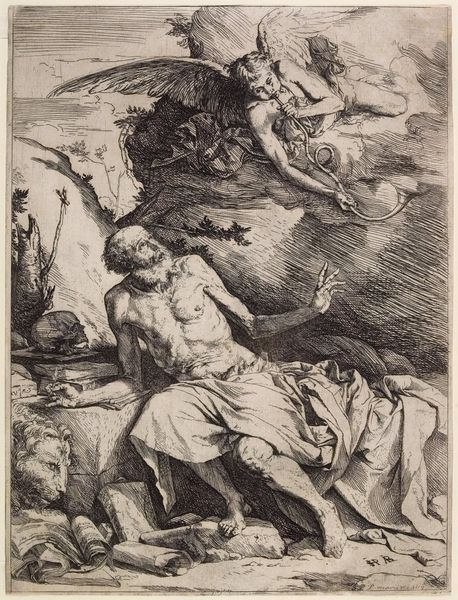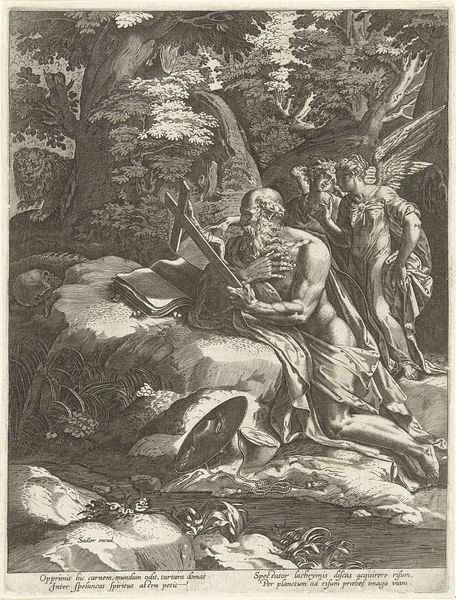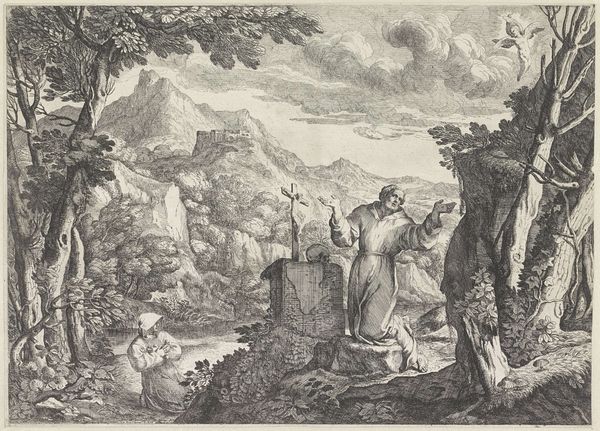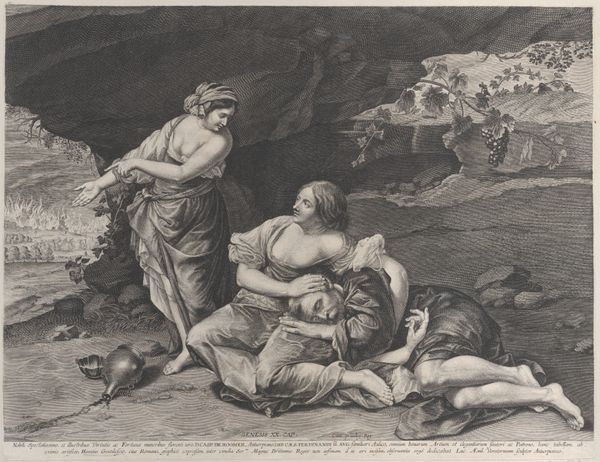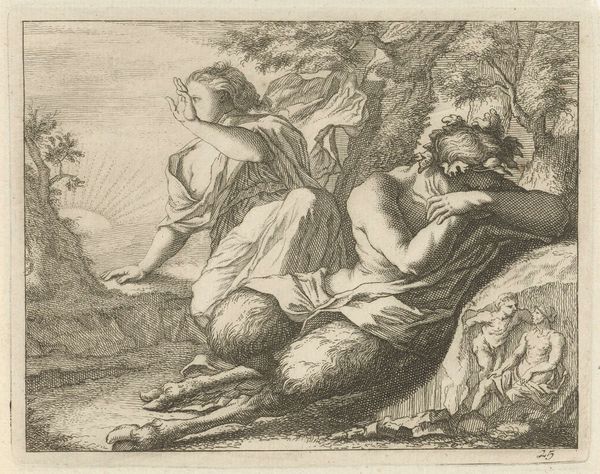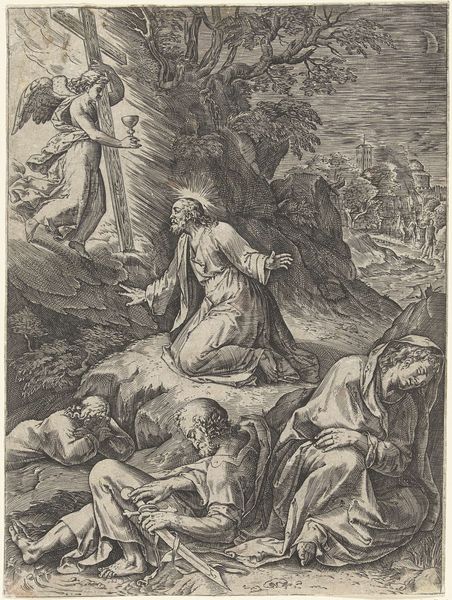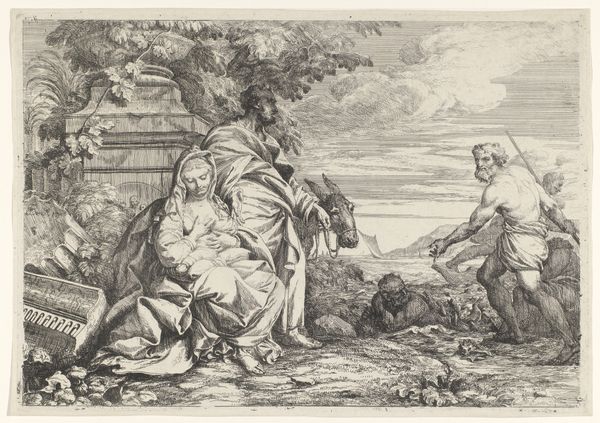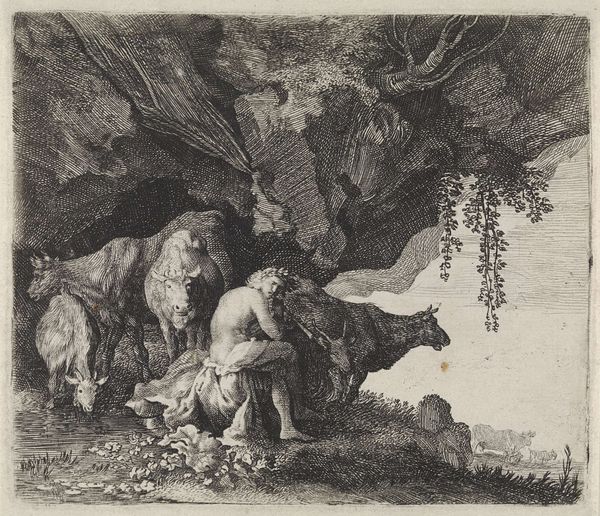
etching
#
baroque
#
etching
#
landscape
#
figuration
#
genre-painting
Dimensions: height 196 mm, width 259 mm
Copyright: Rijks Museum: Open Domain
Curator: This etching, likely crafted sometime between 1600 and 1660, is titled "Herder en herderin," or "Shepherd and Shepherdess," attributed to Moyses van Wtenbrouck. What are your first impressions? Editor: My first impression is the dense, almost claustrophobic, rendering of the figures and livestock, contrasted against a distant, open landscape. It's a work full of tonal variation, particularly around the central figures. Curator: The shepherd and shepherdess subject gained immense popularity throughout the 17th century, particularly within genre paintings intended for the rising bourgeoisie who idealized pastoral simplicity. Editor: Note how Wtenbrouck masterfully varies his line work. See the confident, almost scribbled marks for the foliage contrasting with the more precise delineation of the human figures. This textural dichotomy definitely strengthens the pictorial field. Curator: These works became status symbols; they suggested a learned understanding of classical Arcadia and presented a simplified and largely inaccurate view of rural life, helping to affirm specific social positions and anxieties about urban life. Editor: Yet I can't help but admire how the composition draws the eye from the dark shelter on the left across the resting couple and out into the bright landscape, suggesting both enclosure and release. It's a subtle, effective interplay. Curator: These prints democratized imagery. Owning a Wtenbrouck etching allowed broader access to pastoral themes beyond painted commissions for wealthy patrons. We can see these idyllic scenes functioned as important political, social, and aesthetic mechanisms in Early Modern Europe. Editor: Right. And on a purely visual level, there’s an incredible sophistication in Wtenbrouck's use of light and shade here. It isn't just representational; it's actively creating a mood, a tension between intimacy and vastness, the particular and the general. Curator: I think that such accessible pastoral themes were crucial tools in shaping desires, establishing aesthetic tastes, and legitimizing cultural ideas during a dynamic era of social restructuring. Thank you for exploring this with me! Editor: An insightful historical overview; thank you, I now appreciate what looked at first like simply charming graphic effects.
Comments
No comments
Be the first to comment and join the conversation on the ultimate creative platform.
